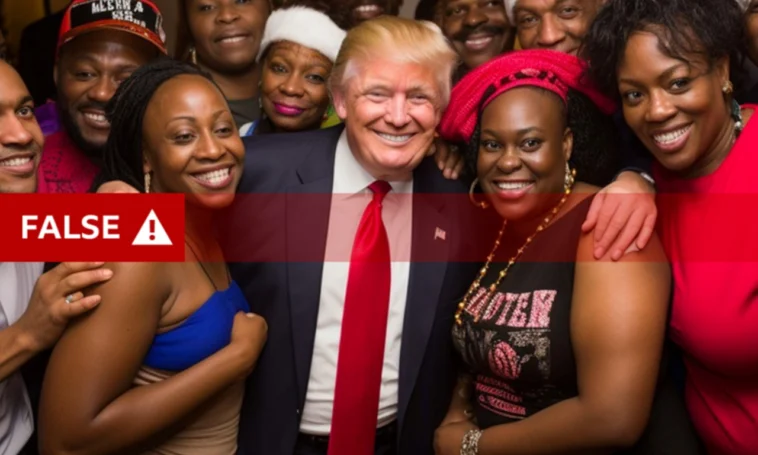Trump supporters target black voters with faked AI-generated images. The emergence of AI-generated fake images targeting black voters underscores the evolving landscape of disinformation tactics in US elections. While foreign influence operations were prominent in 2016, the focus has shifted to home-grown disinformation in recent years, with false narratives about election integrity gaining traction.
In this new wave of disinformation, the utilization of AI to create convincing images that manipulate perceptions of political support within the black community poses significant challenges.
The use of AI technology allows for the creation of images that appear authentic at first glance, making it difficult for viewers to discern between genuine and fabricated content. This phenomenon reflects a broader trend in the digital age, where advancements in technology have facilitated the spread of misinformation and manipulation on a massive scale.
The impact of these AI-generated fake images extends beyond mere deception; they have the potential to influence public opinion and shape political discourse.
“I’m not claiming it is accurate. I’m not saying, ‘Hey, look, Donald Trump was at this party with all of these African American voters. Look how much they love him!'” he said.
By portraying black voters as supporting a particular candidate or political party, these images seek to sway undecided voters and reinforce existing beliefs within the electorate. Moreover, the proliferation of such content on social media platforms amplifies its reach and impact, making it increasingly challenging to mitigate the spread of false information.
While there is no direct evidence linking these manipulated images to any specific political campaign, their dissemination by various individuals and groups highlights the decentralized nature of modern disinformation efforts. Unlike in previous elections, where foreign actors were often identified as the primary instigators of disinformation campaigns, the prevalence of home-grown disinformation signals a shift in tactics and strategies employed by domestic actors.
The motivations behind the creation and dissemination of AI-generated fake images are multifaceted. Some individuals may seek to advance their political agenda or promote a particular candidate by exploiting social media platforms as a means of propaganda dissemination.
Others may engage in such activities for financial gain or simply for the thrill of deceiving others. Regardless of the underlying motives, the proliferation of fake images underscores the urgent need for increased vigilance and countermeasures to combat disinformation in the digital realm.
As the 2024 presidential election approaches, experts warn of the potential for a dangerous combination of home-grown disinformation and foreign influence operations. The use of AI technology to create convincing fake images represents just one aspect of a broader disinformation ecosystem that encompasses a wide range of tactics and strategies.
Social media platforms, political campaigns, and regulatory authorities must work collaboratively to develop effective strategies for identifying and mitigating the spread of false information.
One of the key challenges in combating disinformation lies in distinguishing between legitimate content and manipulated or fabricated material. While social media companies have implemented various measures to address the spread of fake news and misinformation, the rapid evolution of technology presents an ongoing challenge. As AI continues to advance, so too do the capabilities of those seeking to exploit it for nefarious purposes.




Join the Community and Be a Part of the Conversation
You must be logged in or registered to post a comment.